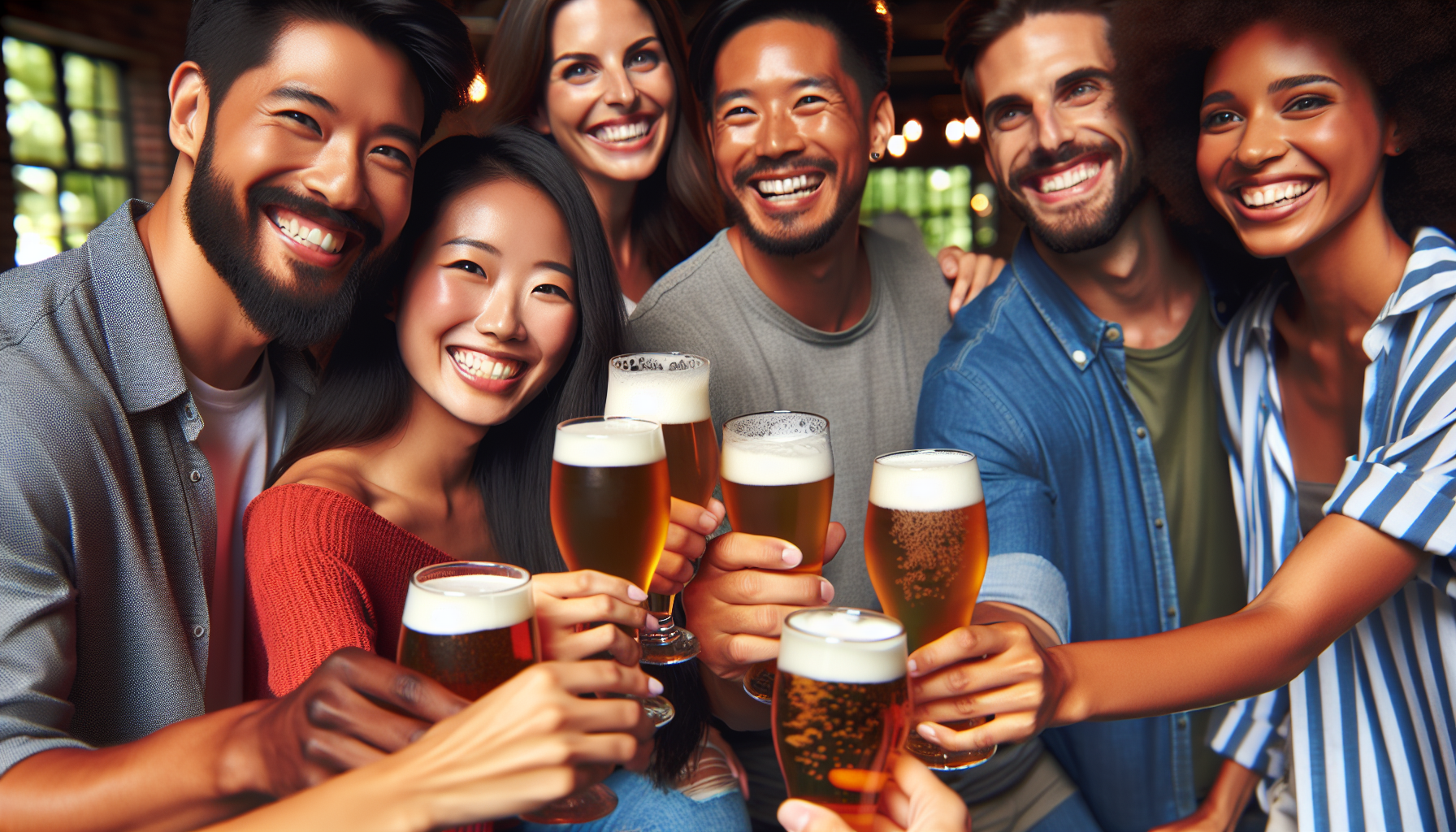The Science Behind the Perfect Pour

At the core of the perfect pour are complex chemical and physical principles. Beer is inherently a carbonated beverage, containing dissolved carbon dioxide (CO2). When a bottle or can is opened, the internal pressure decreases, causing the CO2 to escape and form bubbles. These bubbles are crucial for creating the foam, or head, that sits atop the beer. This foam is not merely decorative; it plays an essential role in trapping volatile compounds responsible for the beer's aroma and significantly contributes to its taste. The physics of pouring also heavily influences the beer’s presentation and sensory experience. The angle and height from which beer is poured determine the size and longevity of the foam. Pouring the beer at a 45-degree angle initially minimizes foam formation, allowing the beer to settle seamlessly into the glass. As the glass nears fullness, transitioning to a straight pour encourages the formation of a creamy head. This method enhances visual appeal and releases aromatic compounds that elevate the beer’s flavor profile.
Insights from Bartenders and Beer Experts
To delve deeper into the art of the perfect pour, we consulted with seasoned bartenders and beer experts. Emily Thompson, a bartender with over a decade of experience, describes pouring beer as a skill that combines precision and intuition. "It's about understanding the beer you're working with. Different styles require different techniques to bring out their best," she explains. Beer expert John Harrison underscores the importance of choosing the right glassware for each beer style. "The shape and size of the glass can impact how the aromas are released and perceived," Harrison notes. For instance, a tulip glass is ideal for capturing the complex aromas of a Belgian ale, while a pint glass is perfect for a classic IPA. This insight emphasizes that the perfect pour extends beyond technique to include thoughtful consideration of the vessel in which the beer is served.
The Role of Foam in Flavor and Aroma
Foam is not just a visual element; it plays a pivotal role in the drinking experience. A study published in the Journal of the American Society of Brewing Chemists highlights foam’s function as an aromatic trap, capturing volatile compounds that would otherwise dissipate. These compounds are gradually released as the foam dissipates, enhancing the beer's aroma and flavor over time. Moreover, foam contributes to the beer's texture. A creamy, well-structured head adds a velvety mouthfeel, complementing the beer's body and carbonation. This aspect enhances the overall sensory experience and can significantly influence how the beer is perceived. As bartenders know, the foam on top of a beer is integral to enhancing aroma and flavor, underscoring why pouring matters.
The perfect pour is a sophisticated dance of chemistry, physics, and artistry. Understanding its science allows bartenders and beer enthusiasts to elevate their beer-drinking experience. From selecting the appropriate glassware to mastering the pour angle, every detail enhances the encounter. As experts have shared, the perfect pour is not just about creating a beautiful beer; it is about unlocking the full potential of the flavors and aromas that make each beer unique. Whether you're a casual drinker or a seasoned connoisseur, appreciating the science behind the pour can deepen your appreciation for this cherished beverage.
Brewing Scientist
Research institutions, large breweries like Anheuser-Busch or Heineken
Responsibilities
Conduct research to improve brewing processes and beer quality.
Analyze beer samples for chemical composition and flavor profile.
Required Skills
Strong background in chemistry or microbiology.
Experience with laboratory equipment and data analysis.
Sensory Analyst
Craft breweries, sensory evaluation firms
Responsibilities
Organize and conduct sensory panels to evaluate beer flavors and aromas.
Develop flavor profiles and quality standards for new beer products.
Required Skills
Exceptional palate and sense of smell.
Training in sensory evaluation techniques.
Brewing Process Engineer
Equipment manufacturers, large-scale breweries
Responsibilities
Design and optimize brewing equipment and processes.
Ensure efficiency and quality control throughout the brewing cycle.
Required Skills
Degree in chemical or process engineering.
Experience with brewing technology and systems.
Beer Sommelier (Cicerone)
Upscale restaurants, specialty beer bars
Responsibilities
Educate patrons and staff on beer selection and pairing.
Curate beer menus that highlight diverse styles and flavors.
Required Skills
In-depth knowledge of beer styles and brewing techniques.
Cicerone certification or equivalent.
Quality Assurance Technician
Both craft and large breweries, such as Sierra Nevada or Molson Coors
Responsibilities
Monitor the beer production process to ensure compliance with quality standards.
Test raw materials and final products for consistency and quality.
Required Skills
Familiarity with quality control protocols in food or beverage production.
Strong attention to detail and problem-solving skills.


